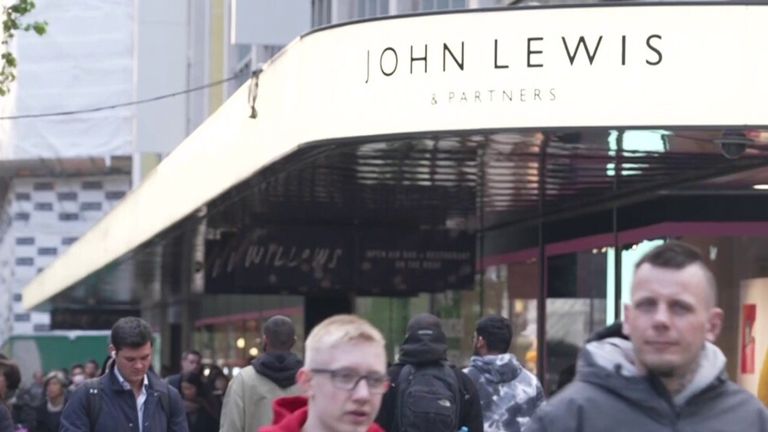John Lewis set for 'significantly higher' annual profit as half-year losses decrease
While fewer people overall shopped at John Lewis some sections saw sales growth while Waitrose continued to increase customer numbers with record product availability.
Thursday 12 September 2024 10:13, UK
High-end store chain John Lewis is on course to profit tens of millions of pounds despite cost of living pressures eating into shop sales.
The profit forecast comes as the employee-owned John Lewis Partnership (JLP) behind the Waitrose and John Lewis shops reported a loss for the first half of the year amid reduced sales.
Despite a £30m loss for the six months ending 27 July, the organisation said it was on track to deliver "significantly higher profits" than last year.
Money blog: Most stressful jobs in UK revealed
The optimism comes as the loss is nearly half that of a year earlier and led the partnership to forecast profits higher than last year.
This is because most annual profits are made in the second half of the year, JLP said.
Workers at the partnership had gone without a bonus for only the third time in its history last year.
Waitrose saves the day
A "challenging market" meant John Lewis sales were down 3% but Waitrose attracted more customers leading to a 5% uplift in sales at the supermarket.
More products were available than at any point in time as JLP reported "record availability" and a 10th consecutive quarter of customer growth.
Its market share grew, the JLP said, as prices rose just over 2% at a time when grocery inflation remained mostly above that rate.
It was part of the partnership attracting 500,000 new customers, reaching 23.1 million. Overall sales were up 2% as JLP said spending on business transformation paid off.
What are people buying?
While fewer people were buying in John Lewis department stores beauty sales "significantly outperformed" last year.
Fewer people were buying clothes due to the squeeze on disposable income and "unseasonal weather", the results said.
Similarly, there was lower demand for expensive items and home items.
Be the first to get Breaking News
Install the Sky News app for free


Performing well were sales of cooking items, smart wearable technology and mobile phones.


